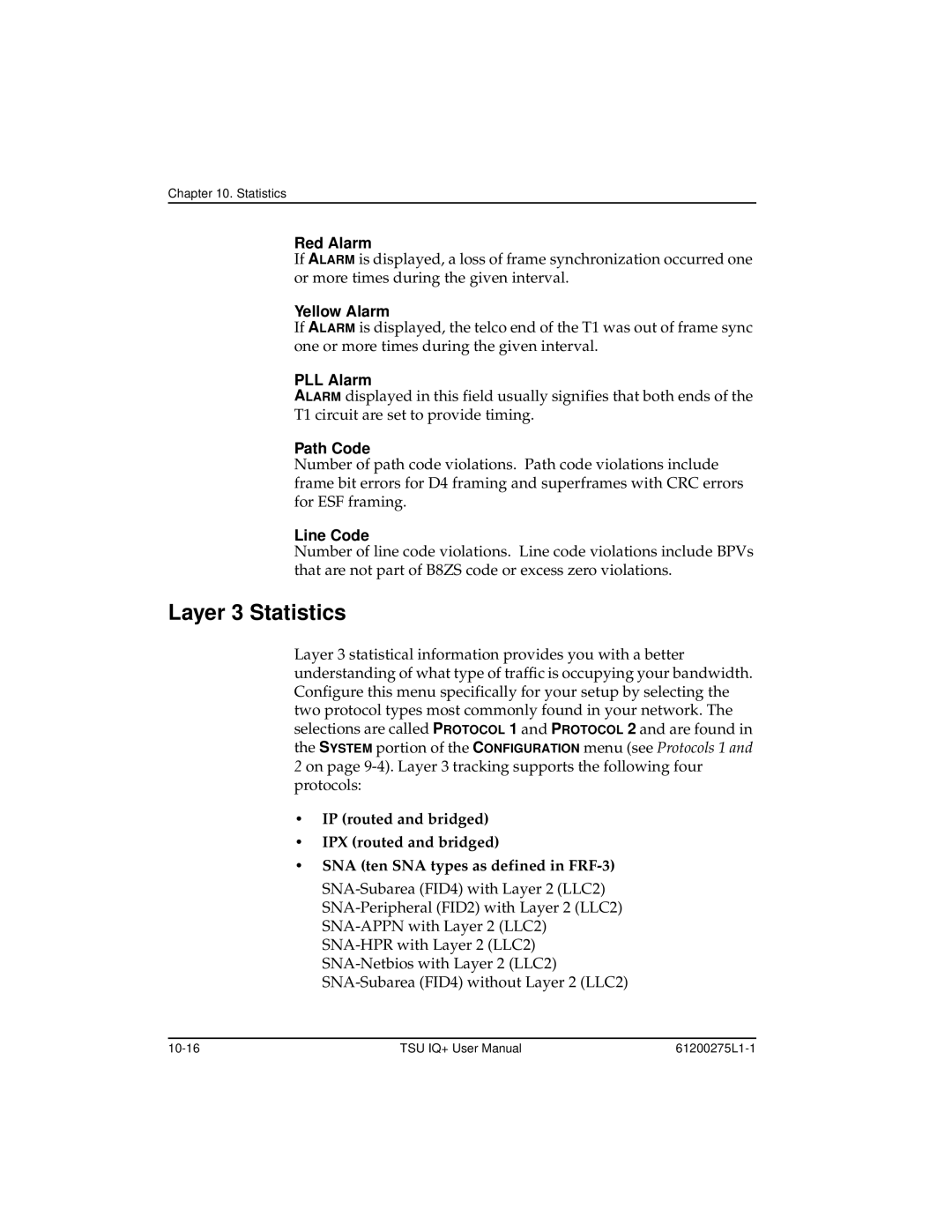
Chapter 10. Statistics
Red Alarm
If ALARM is displayed, a loss of frame synchronization occurred one or more times during the given interval.
Yellow Alarm
If ALARM is displayed, the telco end of the T1 was out of frame sync one or more times during the given interval.
PLL Alarm
ALARM displayed in this field usually signifies that both ends of the T1 circuit are set to provide timing.
Path Code
Number of path code violations. Path code violations include frame bit errors for D4 framing and superframes with CRC errors for ESF framing.
Line Code
Number of line code violations. Line code violations include BPVs that are not part of B8ZS code or excess zero violations.
Layer 3 Statistics
Layer 3 statistical information provides you with a better understanding of what type of traffic is occupying your bandwidth. Configure this menu specifically for your setup by selecting the two protocol types most commonly found in your network. The selections are called PROTOCOL 1 and PROTOCOL 2 and are found in the SYSTEM portion of the CONFIGURATION menu (see Protocols 1 and
2on page
•IP (routed and bridged)
•IPX (routed and bridged)
•SNA (ten SNA types as defined in
TSU IQ+ User Manual |
|
